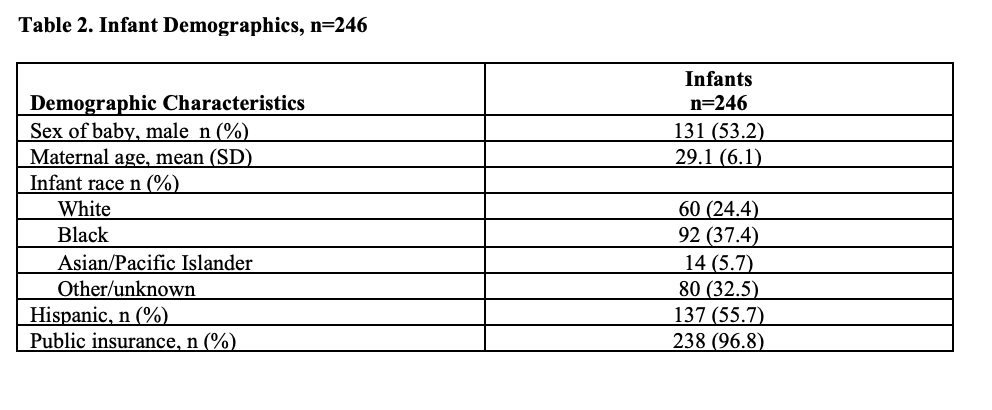Child Abuse & Neglect
Session: Child Abuse & Neglect 2
186 - Expanding the Take 5 Infant Safety Plan for Crying to Primary Care: A Qualitative Study Examining Caregivers’ Perspectives
Saturday, May 4, 2024
3:30 PM - 6:00 PM ET
Poster Number: 186
Publication Number: 186.1327
Publication Number: 186.1327
- SK
Sundes Kazmir, MD (she/her/hers)
Assistant Professor of Pediatrics
Yale School of Medicine
New Havem, Connecticut, United States
Presenting Author(s)
Background: Infant crying is a well-known trigger that can lead to abusive head trauma (AHT). Most AHT prevention efforts that address infant crying have focused on educating caregivers in the newborn nursery about managing frustration with crying. The Take 5 Safety Plan for Crying (Take 5) is an intervention currently taught to parents in the newborn nursery (Table 1).
Objective: The aim of this project was to expand this messaging beyond the newborn period, translate it into Spanish to reach a new audience, and understand caregivers’ perceptions of the messaging.
Design/Methods: A brief (1 min,38 sec) animated video about Take 5, currently shown in the newborn nursery, was translated into Spanish, and shown at the following well visits: newborn, 2-week, 1-month, and 2-month. Caregivers were asked if they would participate in a follow-up phone interview within 1-2 months. Semi-structured, one-on-one interviews (assessing messaging retention, asking for feedback, and understanding caregivers’ experiences with crying) were completed in English and Spanish with mothers and fathers. Transcribed data were analyzed, and themes were developed using the constant comparative method of grounded theory.
Results: The video was shown at the visits of 246 infants (and to 270 caregivers). Table 2 shows the demographic characteristics of the infants, and Table 3 shows the visit at which the video was seen and the frequency of seeing it. Of the 246, 73.6% saw it in English, 25.2% in Spanish, and 1.2% saw both; 84 (34.1%) saw the video at more than one visit. Interviews were completed with 44 caregivers: 31 in English and 13 in Spanish, and 37 mothers and 7 fathers. The following major themes emerged: overall positive impression of the animated video in terms of format and content, good retention/recall of the messaging, the particular benefit of this messaging for first-time and/or young parents, the importance of providing reassurance to caregivers about crying, and a desire for more animated/electronic content about the care of infants at well visits.
Conclusion(s): Participants in the primary care setting valued education about AHT prevention through an animated media format. Caregivers’ reported experiences with infant crying and feedback about the video intervention will further inform prevention efforts. A notable finding of this work is that of a positive reception to animated media and the desire for additional content in this format.



